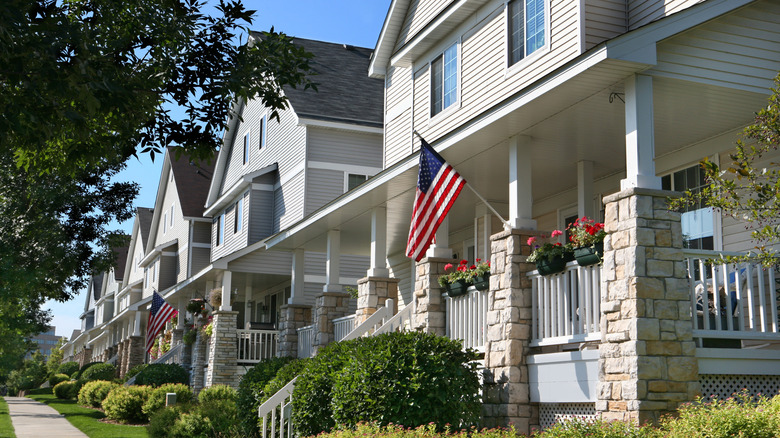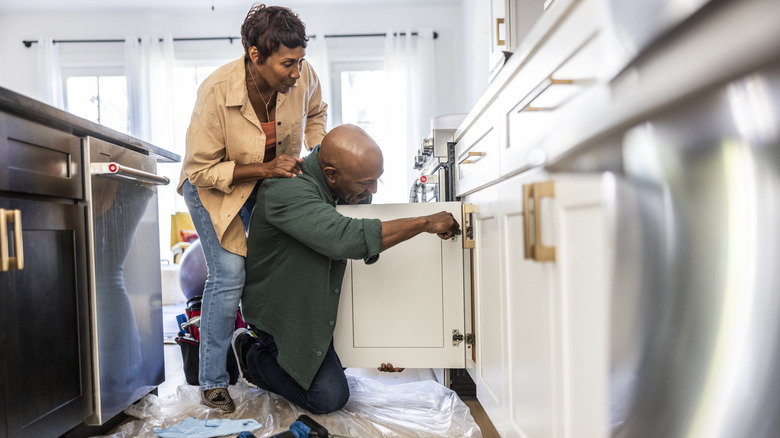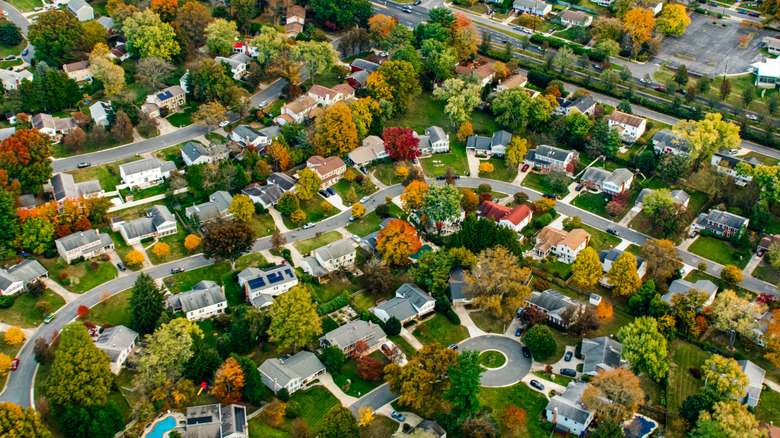Here's How Much Money The Average American Homeowner Spends On Their Home
According to the U.S. Department of Housing and Urban Development, homeownership affordability dropped to 97.2 points in May 2025. That's significantly short of the 130 benchmark set in 1989. By July 2025, 30‑year mortgage rates averaged around 6.72%. Homebuyers already felt the reduced purchasing power, with rising mortgage costs eating into monthly budgets.
The true financial impact often emerges after the home purchase is finalized. According to Bankrate's 2025 Hidden Costs study, homeowners spend about $21,400 a year on ongoing expenses not covered by standard mortgage payments. Routine maintenance alone accounts for about $8,800, utilities add about $4,494, property taxes contribute another $4,316, insurance averages $2,267, and internet plus cable services add roughly $1,515. In fact, 42% of recent buyers with regrets cited higher-than-expected ongoing expenses as their number one surprise.
The annual tab for these non-mortgage housing costs easily outpaced other major household budgets. According to the Bureau of Labor Statistics, families spent $9,985 on food (groceries and dining out combined) in 2023. In 2025, homeownership represents more than just the purchase price — it carries a significant and ongoing financial commitment that cannot be ignored.
Maintenance is where the money goes
Many buyers focus primarily on their mortgage, yet maintenance often surpasses nearly every other expense. According to the Federal Reserve Bank of St. Louis, homeowner spending on upkeep, repairs, insurance, and related bills climbed from $622 in 1984 to $3,974 in 2023. That's a nearly 540% jump over forty years. Now, neglected maintenance expenses account for a larger share of household budgets than they did for past generations.
Older homes often come with steeper costs. According to the U.S. Census Bureau, owners of pre-1950 homes spent a median of $1,800 on essential repairs in 2021, such as roof patches or plumbing fixes. New buyers, however, dropped about $3,900, more than double the amount longtime residents paid, since they often tackle years of deferred maintenance all at once.
The region adds another layer of cost. According to the Federal Reserve Bank of St. Louis, in the Northeast, where colder winters increase heating repairs and labor rates run higher, homeowners spent an average of $3,031 on maintenance, insurance, and other dwelling expenses in 2023, up from $2,692 in 2022, showing that both a home's age and its location can sharply drive up the price tag of owning a house. Inflation also adds more strain. According to the Bureau of Labor Statistics, housing costs rose 4.1% in 2024, shelter costs rose 4.6%, water and sewer fees climbed 5.6%, and trash collection went up 4.3%. A leaky roof or broken heater could land you with unavoidable bills — and those costs only keep climbing.
Home costs vary by location
Where you choose to settle can dramatically affect housing costs. According to the U.S. Bureau of Economic Analysis, regional price parity in 2023 spanned from 54.9 in Mississippi to 157.8 in California. The District of Columbia sat at 168.5, with housing there roughly 68% above the national norm. A big part of that gap comes from property taxes. In 2024, Detroit homeowners faced an effective tax rate of nearly 3.019%, while in Hawaii, it was just 0.298%, according to the Lincoln Institute of Land Policy.
Regional price parities split the U.S. into clear affordability zones. According to the Bureau of Economic Analysis, California's parity reached 112.6, New Jersey at 108.9, and Hawaii at 108.6 — levels that place added strain on household budgets. In contrast, Arkansas' 86.5, Mississippi's 87.3, and South Dakota's 88.1 keep housing and daily costs much lower.
Property insurance costs bring yet another layer of unexpected costs, especially in areas prone to natural disasters, where premiums are higher. According to the Federal Emergency Management Agency, the average cost of flood insurance was $935 annually in 2022. By 2025, Bankrate puts state-level flood rates between $442 in Alaska and $1,563 in West Virginia. Those charges can drive annual housing expenses into the thousands. Before committing to any market, buyers should review local insurance rates and tax regulations.


